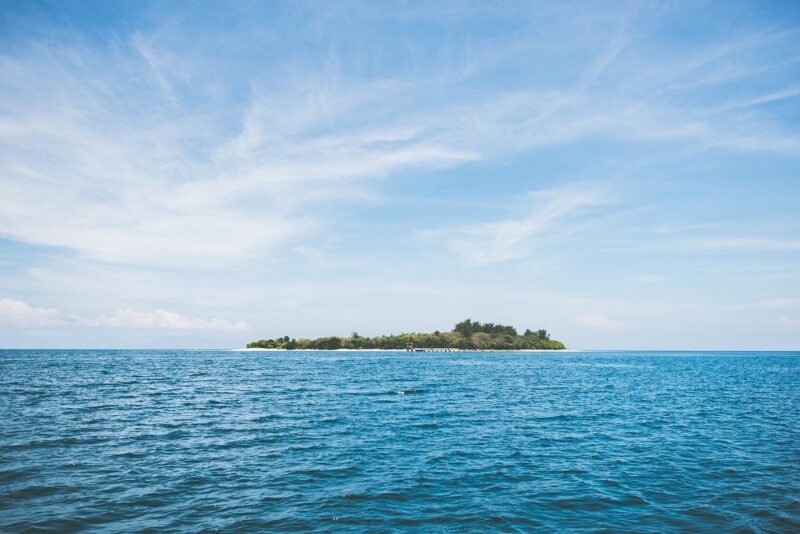
Isolated islands hold a certain mystique, often representing the last vestiges of untouched nature and the secrets of a bygone era. These land masses, removed from the hustle and bustle of modern civilization, are not only geological wonders but also rich repositories of unique cultures, flora, and fauna. This article will take you on a journey through some of the world’s most isolated islands and unveil the extraordinary secrets they hold.
1. Introduction to Isolation
The concept of isolation is relative. Some islands are far from the mainland, while others sit near densely populated areas yet remain secluded due to natural barriers or strict access regulations. This geographical seclusion has profound effects on the ecosystems and cultures that evolve in these isolated environments. Many islands have developed species that exist nowhere else on the planet, creating unique ecosystems that are fundamentally fragile but fascinating.
2. Bouvet Island: The Most Isolated Island in the World
Located in the South Atlantic Ocean, Bouvet Island is often hailed as the most isolated island on Earth. This uninhabited landmass is Norwegian territory and is covered in glaciers, with no inhabitants except for the occasional seal or bird. The island’s significant remoteness —about 1,600 kilometers from the nearest inhabited land—makes it a site of intrigue for scientists and adventurers alike.
Bouvet’s icy environment has been key to its preservation, ensuring that human impacts are minimal. The island is a nature reserve, which protects its rich wildlife and dramatic landscapes. While it might not be a suitable destination for a vacation, its unique geographical status provides researchers with crucial information about climate change and its effects on polar ecosystems.
3. Tristan da Cunha: The Most Remote Inhabited Archipelago
Tristan da Cunha is often referred to as the most remote inhabited archipelago in the world and is located in the South Atlantic Ocean. The main island, also named Tristan da Cunha, is home to approximately 250 people. This small, resilient community has developed its way of life, navigating challenges that come from their extreme isolation.
The locals rely heavily on fishing and farming, producing food that can withstand the harsh climate. The island’s volcanic landscape creates stunning, dramatic seascapes that entice adventurous travelers. Visitors may also find their cultural traditions steeped in the island’s historical ties to Britain, as the island is a British Overseas Territory.
As you walk through the quaint village, you’ll see houses that are adorned with wind-resistant features, a testament to the resilient spirit of its inhabitants. The island also hosts unique wildlife, including the Tristan albatross — a species that relies heavily on these less-traveled waters for nesting.
4. Socotra: The Galápagos of the Indian Ocean
Socotra is often likened to the Galápagos Islands due to its rich biodiversity and unique flora and fauna. Located in the Arabian Sea, near the Horn of Africa, Socotra is home to nearly 37% of its plant species that are found nowhere else on Earth.
The island is renowned for its unusual trees, including the Dragon’s Blood Tree, which produces a red resin used historically for medicinal and artistic purposes. The isolation of Socotra — which is separated from mainland Arabia by more than 200 miles — has allowed for the development of these peculiar ecosystems.
Socotra’s culture is just as captivating as its natural environment, as it is inhabited by a small population that maintains various ancient traditions and a unique language called Soqotri. The island has been designated a UNESCO World Heritage Site, not just for its natural beauty but also for its cultural significance.
5. The Pitcairn Islands: A Legacy of Mutiny
The Pitcairn Islands, including the famous Pitcairn Island, are renowned for their connection to the HMS Bounty mutineers. Located in the southern Pacific Ocean, this group of four islands is home to descendants of those mutineers who settled there in 1790. With a current population of fewer than fifty people, the islands are one of the most secluded inhabited areas in the world.
Life on Pitcairn is challenging yet rewarding for its residents. The island lacks many modern amenities, leading its inhabitants to rely heavily on subsistence farming and fishing. The community is known for its camaraderie and unique blend of Polynesian and European cultures, which can be seen in their traditions, language, and annual festivals.
Given its geographical isolation and historical significance, Pitcairn is a popular destination for adventurous tourists, but access is limited and requires prior arrangements with the local community.
6. The Forgotten Island of Bougainville
At the northern end of the Solomon Islands lies Bougainville, known for its lush interiors and complex history. The island, often overlooked by travelers, was formerly a site of conflict during the Bougainville Civil War in the late 20th century and has since begun to heal and rebuild.
Bougainville is rich in biodiversity and indigenous cultures. With various tribes and languages, the island offers a glimpse into what a truly untouched paradise can be. Visitors can explore its dense jungles, pristine reefs, and spectacular waterfalls while connecting with the warm locals who are keen to share their traditions and stories.
Bougainville’s recent push towards independence showcases its unique identity and willingness to preserve its cultures and landscapes against the backdrop of modern globalization.
7. Conclusion: The Allure of Isolation
Isolated islands serve as a reminder of the beauty and fragility of our planet. Each one tells a unique story about resilience, biodiversity, culture, and the impact of human activity on nature. While they may be challenging to access, these hidden gems provide unparalleled experiences for those willing to explore the secrets they hold.
In our increasingly interconnected world, it’s crucial to recognize and protect these isolated environments, ensuring they remain untouched for future generations to discover and appreciate. Whether you are visiting Bouvet Island for scientific research or savoring the cultural depth of Socotra, the allure of isolation always beckons adventure seekers and cultural enthusiasts alike. The stories of these islands remind us that there is still much to learn beyond the confines of modern civilization.






